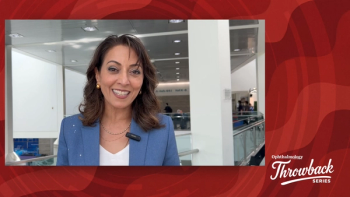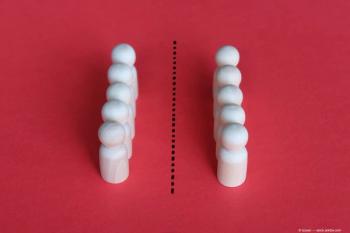
Bladeless surgery feasible
Use of a femtosecond laser with its FDA-approved IntraLaser Enabled Keratoplasty software appears safe and effective for creating clear corneal and arcuate incisions, therefore enabling bladeless cataract surgery.
Orlando, FL-Use of a femtosecond laser (Intra-Lase FS, Abbott Medical Optics [AMO]) with its FDA-approved IntraLase Enabled Keratoplasty software (AMO) appears safe and effective for creating clear corneal and arcuate incisions, therefore enabling blade less cataract surgery, said James C. Loden, MD, during Refractive Surgery Subspecialty Day at the annual meeting of the International Society of Refractive Surgery/American Academy of Ophthalmology.
Dr. Loden, medical director, Loden Vision Centers, Goodlettsville, TN, presented 1-month postoperative outcomes achieved in a prospective, nonrandomized, IRBapproved pilot study in which the FS60 femtosecond laser or iFS platform was used to create three-planed clear corneal cataract incisions, the paracentesis port, and arcuate incision(s), if indicated for astigmatism correction.
At the 1-month visit, uncorrected visual acuity (UCVA) was 20/25 or better in 90% of eyes and all eyes had 20/25 or better best-corrected visual acuity. Based on data accumulating from later follow-up, more than 95% of eyes are expected to achieve 20/25 or better UCVA when the study is complete.
"These are impressive visual acuity outcomes, even better than I expected, and they show that it is possible to achieve incredible functional results even when performing cataract surgery with a manual capsulorhexis, not using a femtosecond laser for capsulotomy," he said.
OCT imaging
Serial optical coherence tomography (OCT) imaging was also performed, and Dr. Loden mentioned that when reviewing the images obtained at 30 minutes postoperatively, slight endothelial wound gape was noted.
To investigate this issue further, Dr. Loden performed OCT imaging at 30 minutes postoperatively in a consecutive series of 10 eyes undergoing cataract surgery using a blade for the corneal incisions. The wound gape was also observed in eyes with the blade-created incisions. However, the incisions showed better apposition at 1 day after surgery, and in the eyes undergoing the femtosecond bladeless procedure, the gape at Descemet's membrane, endothelium, and deep stroma had disappeared by 1 week.
The OCT images also demonstrated the femtosecond laser was successful in creating three-planed clear corneal incisions. In contrast, whereas a two-step incision was attempted using the blade in a dimple-down technique, it was evident in the OCT images that the incisions were only single plane.
"The angle between the first two planes in the incision created with the femtosecond laser is where the strength of the architecture comes from," Dr. Loden said. "This is the site of the wound compression that gives a great seal and great outcomes."
He noted that questions have also been raised about the efficacy of femtosecond laser-created arcuate incisions based on the idea that the technique does not manually separate the cornea lamellae. However, OCT images obtained at 5 minutes postoperatively showed the opaque bubble layer created by the laser caused a wide separation of the lamellar fibers. Images obtained at 30 minutes showed the area of separation had narrowed, but was still present.
"At 1 day postop, the incisions made with a 30° cut angle are almost invisible, and I would challenge a cornea-trained specialist to be able to detect the incision at 1 week," Dr. Loden said. "However, the refractive effect is being maintained with follow-up to 3 months."
FYI
James C. Loden, MD
E-mail:
The research was sponsored by Abbott Medical Optics. Dr. Loden is a consultant to that company.
Newsletter
Don’t miss out—get Ophthalmology Times updates on the latest clinical advancements and expert interviews, straight to your inbox.


















































.png)


